What Types of Flues Can You Use With a Log Burner?
If you’re about to invest in a log burner for your home, then you’ve probably read or been told that you will need a flue. The question you may have is, “what type of flues can you use with a log burner?”. Well, keep reading and the Trade Price Flues team will provide you with the answer…
What is a flue?
First of all, if you’re new to the world of log burners, then you may be wondering what exactly a flue is.
Well, a flue is effectively the inside section of a chimney. It’s for this reason flues are often called ‘flue liners’, because they ‘line’ the inside of the chimney.
Depending on the type of chimney your home has, then you’ll likely need to use a particular type of flue.
The easiest way to determine what type of flue you’ll need to go with your log burner, is to work out what type of chimney you have.
Figure out your chimney type
In order to select the correct flue to use with your log burner, you first need to identify what type of chimney your home has (if any).
Below, you’ll find the most common types of chimneys found in UK homes.
Class 1 chimney
If you live in an older home - one that was built prior to the 1960s - then it’s likely that you’ll have a traditional brick and mortar built chimney. These are known as ‘class 1’ chimneys in the trade.
Class 1 chimneys were typically lined on the inside with a lime mortar. This provided a flue lining that protected the brick and mortar of the chimney from the acidic elements within the smoke from the fire.
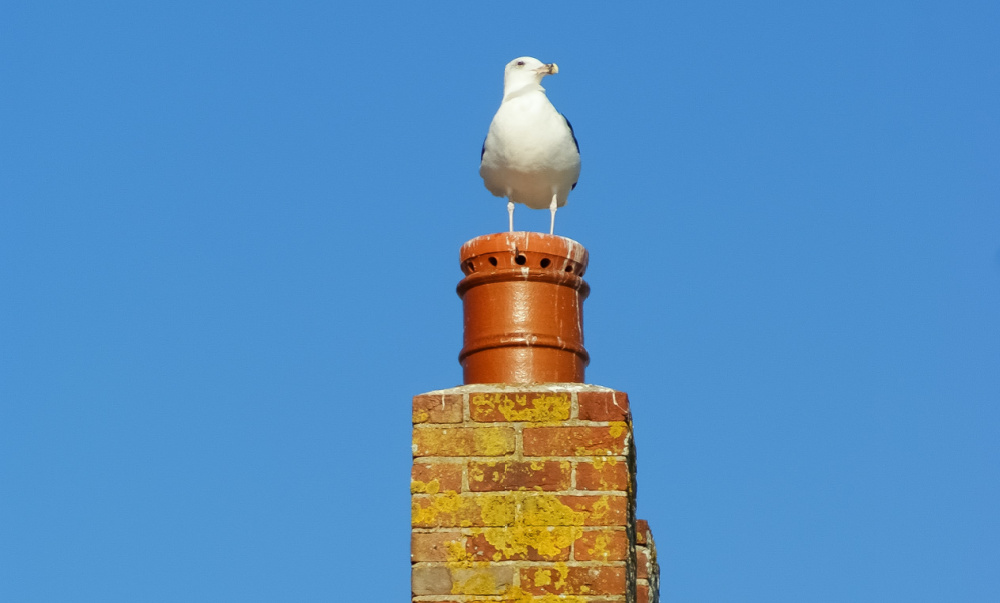
Class 1 chimneys would also sometimes be lined with concrete, pumice, or clay linings. These chimneys typically started life with a lime mortar lining, which was subsequently replaced.
Precast chimney
If you live in a newer home - typically one that was built from the 1980s onwards - then you may have a precast chimney.
Precast chimneys are normally made from concrete or pumice hollow blocks and are built up through the walls of a home. This type of chimney flue will continue up within the walls of a building until it reaches the roofline. Once at the roofline, the precast flue will transition to a stainless steel pipe which will sit within the loft.
Once the stainless steel pipe reaches the inside of the roof’s surface, it will exit through the roof using either a ridge tile or GC1 terminal.
Note - precast chimneys are not suitable for use with log burners. However, it is possible to buy a limited number of gas-powered log burners that can be used with precast chimneys. If in doubt, always seek professional advice.
No chimney
In many newer homes, you’ll find that there isn’t a chimney at all. If you find that’s the case, then don’t worry. You may still be able to install a traditional wood-burning stove in your home. You’ll simply need to put the appropriate flue and chimney solution in place first.
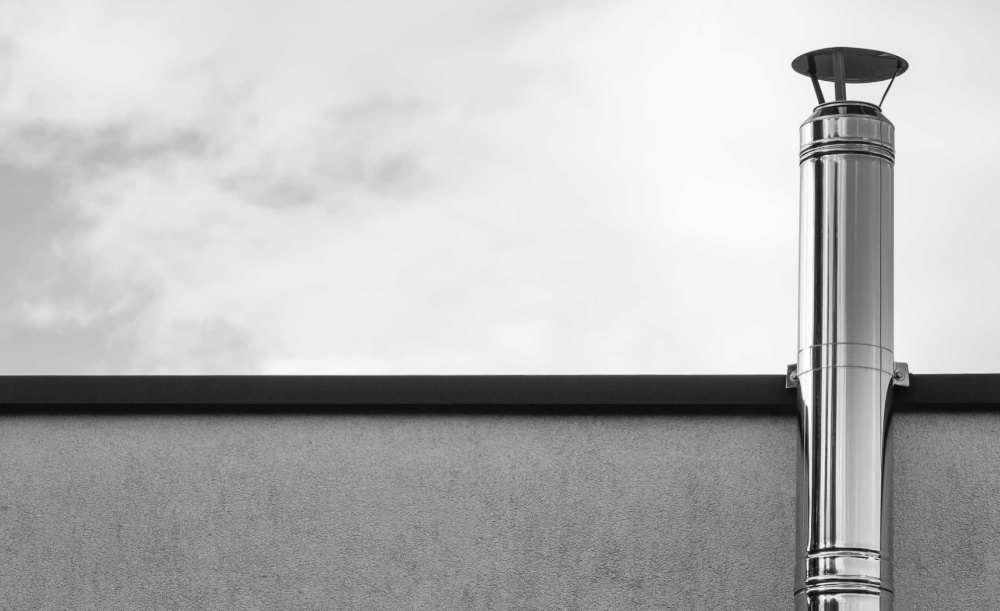
If you find that you’re unable to identify what type of chimney your home has, then a chimney sweep can help. Your local chimney sweep will be able to inspect your chimney and advise upon what type of flue is suitable for use with your log burner.
Guide - for more information on flues, read our guide to the different types of chimney flues.
What type of flue do I need for my log burner?
Okay, if you’ve been able to identify what type of chimney your house has, then it’s time to select an appropriate flue.
Below, we’ve set out each type of chimney and the appropriate flue for each - however, it’s important to note that caveats do apply. After all, every installation scenario is unique and may differ from what we’ve described here.
TL;DR
If you don’t want to read loads of text, then here’s the quick ‘too long; didn’t read’ answer to this question:
> Traditional class 1 chimney - use a flexible metal flue liner.
> Prefabricated chimney - don’t use wood-burning stoves with this kind of chimney!
> No chimney - use a twin-wall flue to create a chimney.
You’ll find more information about each of these points below.
What type of log burner flue should you use with a class 1 chimney?
In the case of a traditional class 1 chimney, we’d recommend using a flexible metal flue liner with your log burner.
Whilst your chimney may already be lined - be it with lime mortar, pumice or concrete - it’s best practice to use an additional flexible liner with your flue.
Why? Because traditional class 1 chimneys - even ones which have been lined with lime mortar, pumice or concrete - are poorly insulated. Being poorly insulated means your log burner won’t perform as well as it could do.
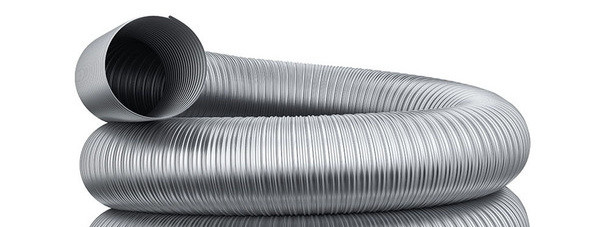
In a cold chimney, the smoke emitted from the log burner will cool as it rises up the chimney. In the worst cases, if the smoke cools too much, it’ll actually drift back down the chimney and out into your living space.
Traditional class 1 chimneys also tend to have a poor ‘draw’. This is the cycle of air which helps to start and sustain the fire within your log burner.
Using a flexible metal flue liner gets rid of these problems and will make your log burner easier to light and more efficient.
The use of a flexible metal flue liner will also make your chimney safer, as it will prevent the build up of creosote and other combustible materials on the inside walls of your chimney cavity.
What type of log burner flue should you use with a prefabricated chimney?
As we mentioned earlier, you should not use a log burner with a prefabricated chimney.
This is because prefabricated chimneys are generally designed for use with gas fires, as opposed to wood burning appliances like a log burner.
Prefabricated flues - because they are built into the wall of the building - are mostly quite shallow and narrow. This means they would be unable to handle the volume of smoke and combustibles generated by a traditional log burner.
If you do have your heart set on installing a log burner in a home with a prefabricated chimney flue, then there is an alternative. There are some models of gas stove which are appropriate for use with prefabricated chimneys. These are effectively gas fires that look like traditional log burners.
What type of log burner flue should you use if your home doesn’t have a chimney?
Should your home not have a chimney, then it’s still possible to install a log burner. To safely install a log burner in a home without a chimney, you’ll need what’s known as a twin wall flue.
Twin wall flues - sometimes also referred to as class 2 chimneys - enable homeowners to create a chimney from a series of interlocking metal flue pipes.
As we’ve written previously, twin wall flues can be installed either internally or externally. In others, you can run the flue up through your home and out the top of the roof - or you can exit the flue from an external wall near your log burner and run it up along the outside wall of your home.
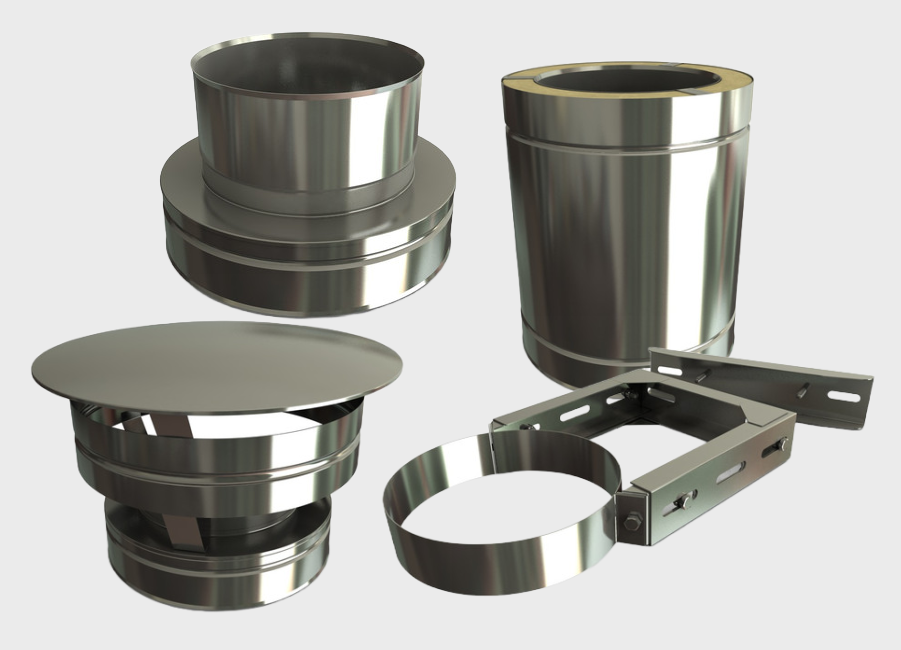
Twin wall flues work in the same way as traditional chimneys, creating a ‘chimney effect’ (the cycle of air we referred to earlier that helps to light and sustain the fire within the log burner).
However, twin wall flues are superior to traditional chimneys in a number of ways.
Firstly, twin wall flues are thoroughly insulated. As their name suggests, twin wall flues are made up of a flue within a flue, with a sandwich of insulation between each one.
This means that twin wall flues keep the smoke from your log burner warm up to the point that it exits the top of the flue. This means that twin wall flues create an excellent ‘draw’ and make lighting your stove easy. They also make your log burner more efficient.
How to buy the right type of flue to go with your log burner
Now that we’ve seen which types of flue liner are most suitable for each chimney scenario, let’s take a closer look at the liners themselves.
Flue liners are definitely not a ‘one size fits all’ component, and each type of flue you buy will be determined by the type of log burner you have purchased.
Depending on your particular installation scenario, it’s likely that you’re going to be buying either a flexible metal flue liner, or a twin wall flue. Below, we’ve detailed the key points to consider when buying each type of flue.
Flexible metal flue liner buying tips
Should you have a traditional class 1 chimney, then you’re going to want to buy a flexible metal flue liner for your log burner.
But, to buy the correct metal flue liner for your log burner, you’re going to want to pay attention to the following things.
Material
What will you be burning inside your log burner? How you answer this question will determine what material flue liner you should be buying.
You see, flexible metal flue liners tend to be made from one of two materials; 316 grade stainless steel, or 904 grade stainless steel.
If you are only going to be burning wood in your log burner, then you will want to buy a flexible metal flue liner made from 316 grade stainless steel.
However, if you intend to burn wood and solid fuels such as anthracite in your log burner, then you’ll need to buy a flexible metal flue liner made from 904 grade stainless steel. This is because solid fuels such as anthracite burn at a higher temperature than firewood.
Note - if you want to burn solid fuels in your log burner, then it’s important you buy what’s known as a ‘multi fuel stove’.
Diameter
The diameter of your flue liner is a crucially significant thing to think about. It’s essential that you select a flue liner which is of the same diameter as your log burner’s stove-pipe.
For example, if your log burner has a stove-pipe with a six-inch diameter, then you should select a flexible flue liner which has a six-inch diameter.
Length
When selecting a flexible metal flue liner, you should also give some thought to how long you’ll need the liner to be.
Bear in mind that the flue liner has to reach from the very top of your chimney all the way down to your log burner’s stove-pipe.
If in doubt, we’d also suggest buying a slightly longer flue liner than you think you’ll need. You can always cut it down to fit during installation.
Note - it is against the Building Regulations to join two flue liners together.
Quality
Not all flexible metal flue liners are created equal! Whilst it may be tempting to buy a cheap generic flue liner off an online marketplace, it really is a false economy!
Most importantly, buying a quality flue liner is all about safety.
Here at Trade Price Flues, all of our flexible metal flue liners are designed, manufactured and tested in line with British, European, and International best practices.
Explore our range of flue liners and you’ll find they are tested to EN 1856-2 (Chimneys - Requirements for metal chimneys - Part 2: Metal flue liners and connecting flue pipes). They are also fire rated to T1000.
That’s not something that can be said for many cheaper, generic metal flue liners.
Aside from the safety factor, buying a quality flue liner is about value for money. Sure, you may find that a cheaper liner saves you money in the short run - but you’ll almost certainly find that the liner needs to be replaced within only a few years of installation.
Properly designed and manufactured flue liners on the other hand can last for decades. Here at Trade Price Flues, many of our flue liners come with no-quibble guarantees of up to 30 years!
So the old saying really is true - you get what you pay for!
The best flexible metal flue liners for log burners

Shop Now - Flexible Metal Chimney Flue Liners
If you want a flue liner that embodies all the characteristics and qualities outlined above, then you’re going to want to buy a flue liner from Trade Price Flues.
We stock flexible metal flue liners across both main grades of stainless steel (316 and 904), spanning diameters from four inches up to 9 inches.
All of our liners are available in multiple lengths too - ranging from five metres up to 20 metres.
Our flexible metal flue liners are also made in the UK, feature exceptionally long guarantees, are designed, manufactured and tested in line with all applicable safety and quality standards. They’re also trusted by installers and chimney professionals the length and breadth of the UK.
The best flue liner kits for log burners
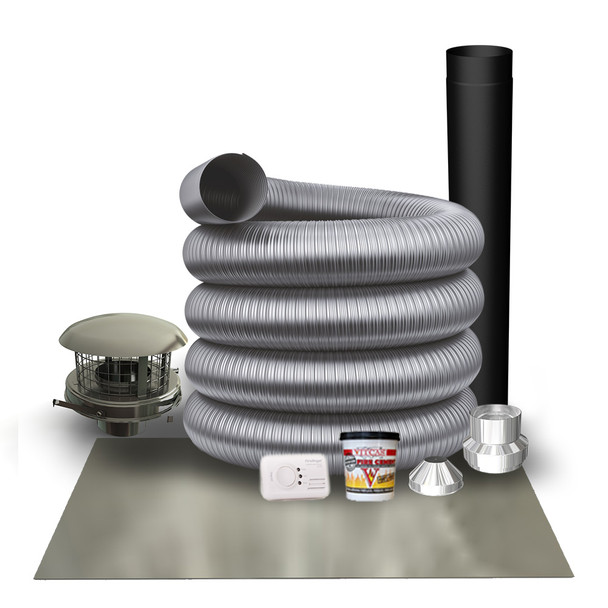
Shop Now - Flue Liner Fitting Kits
Instead of buying a flue liner and then shopping for the other necessary components individually, it can be easier to purchase a flue liner kit.
Depending on your own particular installation scenario, a flue liner kit will generally contain everything you need to add a flexible metal flue liner to your chimney and log burner.
The average flue liner kit contains:
> Flexible metal chimney flue liner.
> Stove-pipe to flue liner adapter.
> Stove-pipe.
> Pot hanger rain cap.
> Nose cone.
> Carbon monoxide alarm.
> Fire cement.
Note - if you are struggling to find a flue liner kit that contains everything you need, contact us. We may be able to create a bespoke package for you.
Twin wall flue buying tips
If you don’t currently have a chimney in your home, and need to create one for your log burner, then you’re going to need a twin wall flue.
However, like flexible metal flue liners, there are a few important things you need to be aware of in order to buy the correct flue for your log burner.
Below, we’ve set out the key things to look for when selecting a twin wall flue.
Material
When selecting a twin wall flue to use with your log burner, we recommend choosing a flue which is manufactured from high-quality stainless steel.
Here at Trade Price Flues, the majority of our twin wall flues are made from 316-grade stainless steel for the inner flue section, and 441-grade stainless steel for the outer flue section.
This mix of stainless steels means that our twin wall flues are suitable for use with both standard wood-burning stoves, and multi fuel stoves.
In addition to the individual flue sections, you want to make sure that the other parts of the twin wall flue - such as the locking bands, adapters, wall brackets, cowls, finishing plates, and base supports - are all made from a quality metal such as stainless steel.
By selecting twin wall flue sections and components made from stainless steel, you’ll end up with a flue which is resistant to corrosion and able to withstand the worst of the weather.
Sizing
Depending on the size of your log burner and the building in or on which you’ll be installing the twin wall flue, you’ll need to pay particularly close attention to sizing.
You should ensure that the inner diameter of your chosen twin wall flue corresponds to the diameter of your stove’s collar/pipe.
As twin wall flues consist of individual sections, you will also need to work out how many you will need to ensure the top of the flue is the correct distance from your home’s roof. As we’ve written previously, the horizontal distance between the chimney cowl (the top of the twin wall flue) and the roof’s surface, should be at least 2.3 metres.
Depending on whether you are going to be installing your twin wall flue internally or externally, you may also need to buy a series of bends and tees.
Guide - for more information, read our guide to twin wall flue sizing.
Quality
Because twin wall flues are basically prefabricated chimneys, you want them to be of the highest possible quality. This is particularly true if you’re going to be installing your twin wall flue on the outside of your home.
Here at Trade Price Flues, our twin wall flues are designed, manufactured and tested in line with all applicable British, European and International standards, including EN 1856-2.
Our twin wall flue systems are also fire rated to T1000 and come with long guarantees (in almost all cases 30 years).
In short, if you want to buy the very best twin wall flue to use with your log burner, buy a twin wall flue from Trade Price Flues.
The best twin wall flue components for log burners

Shop Now - Twin Wall Flue Components
If you want to buy the components for your log burner twin wall flue individually, then explore the huge range we have available here at Trade Price Flues.
We have twin wall flue components available in either a polished stainless steel finish, or in matt black.
Individual twin wall components stocked include:
> Individual lengths of twin wall flue:
>250 mm.
> 500 mm.
> 1,000 mm.
> Adjustable individual lengths of twin wall flue:
> 380 - 585 mm.
> 590 - 1,005 mm.
> Twin wall flue bends:
> 15 degrees.
> 30 degrees.
> 45 degrees.
> 90 degrees.
> Tees.
> Wall brackets.
> Base supports.
No matter what type of twin wall flue configuration you’re attempting to achieve, it’s likely Trade Price Flues has what you need to make it a reality.
However, if you’re struggling to find the twin wall parts you need, our expert, friendly team will be happy to help. You can reach them on 0161 6975 491 or at: sales@tradepriceflues.co.uk.
The best twin wall flue kits for log burners
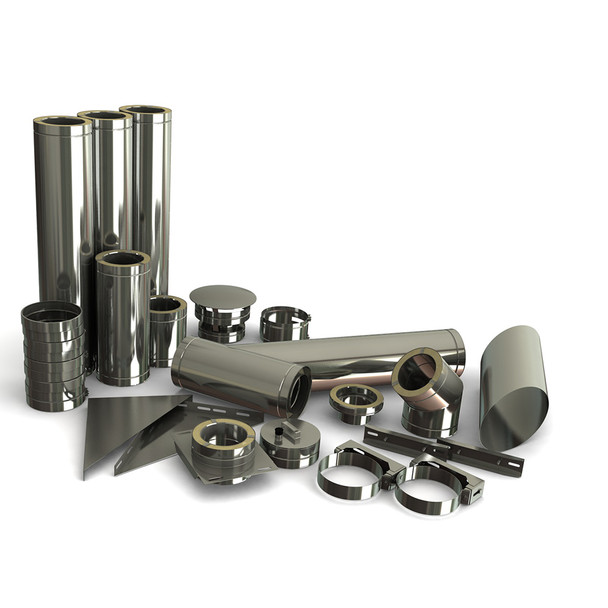
Shop Now - Twin Wall Flue Kits
It’s also possible to buy twin wall flue kits. These are kits that contain the various components and parts you require to complete a typical twin wall installation.
Here at Trade Price Flues, we stock a twin wall flue kits that are suitable for installation scenarios such as; single storey, double storey, straight up (vertical), offset, internal routing, and external routing.
Our twin wall flue kits are available in either matt black or polished stainless steel finishes and five-inch and six-inch diameters.
Where to buy the best log burner flues
We hope you’ve found this guide useful and you’ve figured out which type of flue is going to be suitable for your log burner.
If you’re ready to buy a flue for your log burner, then explore the Trade Price Flues website. We offer flexible metal flue liners and twin wall flue systems at trade prices, with nationwide delivery.
We also aim to hold as much stock as possible. So, if it’s a flue you’re after, you’re in the right place!
Shop flue liners and twin wall flues at Trade Price Flues now
For more chimney and flue advice, read the Trade Price Flues blog…
How Fitting a Flue Liner Can Save You Money On Your Energy Bills | How to Stop Rain From Coming Down Your Chimney | When Do You Need to Replace a Flue Liner?
Latest Articles
-
Air Pollution Down in the UK Despite Record Wood Burner Sales
Great news! Wood-burning stoves, once considered environmental villains, have transformed into eco-f …18th Apr 2024 -
A Guide to Stove Installation in Lodges, Sheds, and Shepherd’s Huts
Shepherd’s huts, lodges, and sheds have become increasingly popular as charming retreats or alternat …25th Mar 2024 -
Pinned vs. Pinless Moisture Meters: Which is Best for Firewood?
When you collect or buy firewood, it usually starts very moist inside. Using sopping wet wood to bur …4th Mar 2024






